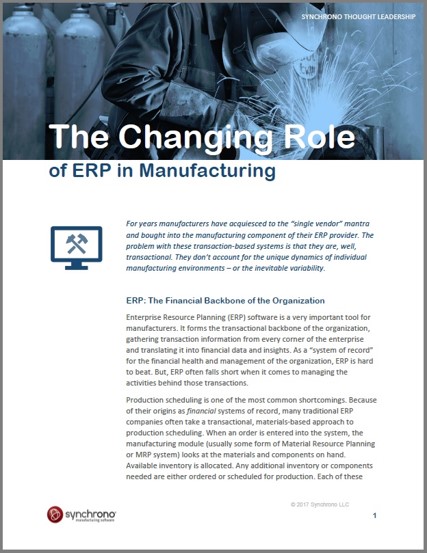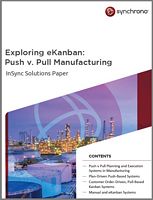Blog
-

Thought Leadership: The Changing Role of ERP in Manufacturing
ERP is a great system of record for managing transactions – and the financial health and management of the organization – but often falls short when managing the activities behind those transactions. Production scheduling is one of the most common shortcomings. This paper reviews the evolution of production planning, scheduling and execution “tools” and why…
-

Manufacturers Get Lean on Scrap with eKanban Software
Manufacturers Get Lean on Scrap with eKanban Software The method of Lean Manufacturing is based on the relentless elimination of waste in manufacturing and ongoing continuous process improvement. For many, material scrap is an expensive form of waste; costing more than the material itself. Consider that hiding behind every dollar of scrapped inventory are several…
-

It’s Time: Manufacturers Need to Cut Ties with MRP and Spreadsheets
A few years ago, Aberdeen Group did a study that showed that 63% of “best in class” manufacturers still used spreadsheets for planning. With percentages this high, it’s probably safe to say that there is a lack of trust in planning tools like ERP and MRP even in the best-run companies. Of course, spreadsheets come…
-

The Future of the Organization is On Your Shoulders
Imagine this: You’re in a high-level planning meeting with senior leadership, when the CEO and CFO issue a clear mandate: Get inventory levels under control. The VP of Sales, never being one to hold back an opinion, steps in to argue that the organization needs to become more competitive if it’s to survive. Right…
-

Exploring eKanban: Push v. Pull Manufacturing
Exploring eKanban: Push v. Pull Manufacturing If you’re considering a shift from a traditional, push-based MRP manufacturing system to a more progressive pull-based system, this white paper is a must read. While contrasting both types of systems, the paper explores the nature of pull-based manufacturing and the evolution of Kanban systems to support today’s demand-driven…

